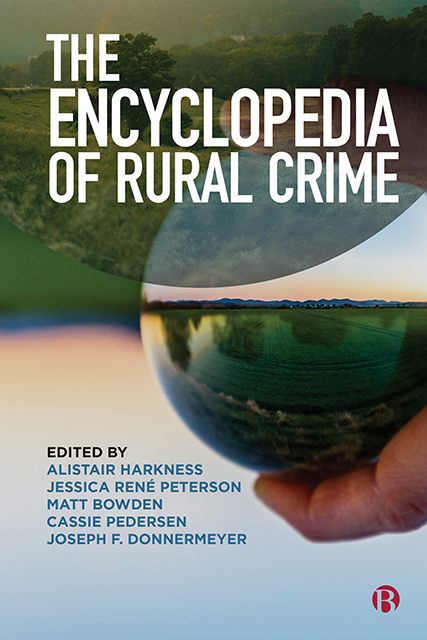Book contents
41 - Water Crimes
Published online by Cambridge University Press: 20 June 2023
Summary
Water can be found almost everywhere on planet Earth and is the world’s greatest renewable resource, crucial for human survival. Water appears in the form of oceans, seas, lakes, rivers and streams, canals and ponds, waterfalls and underground water caves, thermal springs, icy Arctic and Antarctic areas as well as lesser-known underground reservoirs.
Water is the second most important natural element, besides air, for the survival of the human (and other) species (note that approximately 75 per cent of the human body is composed of water). Water can be defined as a natural transparent liquid that is also colourless, odourless and tasteless. Water is an environmental resource damaged by crime, the object of a crime or the means to commit a crime.
Crime is an intentional act or omission (negligence) that constitutes an offence and is punishable by law. Clifford and Edwards (1998) note that an environmental crime is any act that violates the law or an environmental regulation. Environmental crime is an environmental intervention, which is every permanent or temporary act or resigning process which negatively influences the environment, people’s health and the exploitation and use of natural goods.
Water is a natural good. Therefore, crimes against water present one form of environmental crime. Water crime can be defined as any punishable contravention or violation of the limits on human behaviour imposed by national criminal legislation, which uses surface and groundwater or water services as a means for committing other crimes.
Water and ‘rural green criminology’
Water is precious, with no substitute. Therefore, water resources and systems are attractive targets for criminals. The harm and risk to the water supply are associated with multiple causes ranging from industrial pollution and water theft to global warming. Its importance to the personal, social and economic health and wellbeing has generated increasing criminological interest since the turn of the twenty-first century. Besides green criminology, rural criminology is increasingly interested in water crimes, as most water sources are located in rural areas and, consequently, most water crime occurs there. There is an urgent need to consider the nature, dynamics and impacts of water crimes from an environmental drivers’ perspective (for example, land use, climate change and infrastructure).
- Type
- Chapter
- Information
- The Encyclopedia of Rural Crime , pp. 162 - 165Publisher: Bristol University PressPrint publication year: 2022



